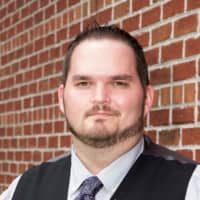
- (571) 645-9640
- Cartersville, GA
- donavin@dnorthrupga.com
20 years of crafting Seamless Solutions
Where Tech Expertise Meets Creative Vision
What makes Donavin tick?
Professional
Over the past two decades, I’ve helped guide four startups to successful acquisition, playing key roles in technology transformation, go-to-market execution, and post-sale integration. I’ve also navigated three acquisitions from the inside, giving me a deep appreciation for the orchestration it takes to scale sustainably.
My journey began at Nintendo of America, where I contributed to the eShop and Wii launch — but I quickly found myself more drawn to operational architecture than game design. That led to roles at Xerox and World Bank Group, where I led enterprise-scale initiatives in workflow automation and cloud migration.
At Mirum (a WPP agency), I led a multi-year engagement with the U.S. Department of Defense, migrating legacy systems into a fully compliant IL-5 FedRAMP cloud environment. One of my most impactful initiatives was Battle Position — a VR/AR-enabled recruiting platform that fused immersive simulation with real-time performance capture to streamline candidate selection and improve mission readiness insights.
Today, I serve as VP of Solutions & Services at data.world, where I’m building customer success frameworks that blend implementation rigor with AI-first thinking. My team has developed a modular methodology built on agentic workflows, knowledge modeling, and LLM-enabled orchestration — helping customers move from discovery to value faster and more intelligently.
I thrive at the intersection of execution and emergence — where good systems, clear context, and a little AI magic unlock outsized outcomes.
Personal
While my career has always been rooted in systems thinking, the last few years have marked a sharp evolution — from builder to orchestrator. I now focus much of my creative energy on agentic architectures, designing tools and workflows that don’t just automate tasks, but intelligently coordinate teams, priorities, and delivery.
I’ve become deeply immersed in the LLM agent ecosystem, building modular agents for QA, test planning, feature validation, and story grooming — all woven into my own development pipeline. What started as isolated experiments has evolved into a living system I use to manage and scale my technical projects.
In 2022, I founded a game design company as a creative outlet, and I’m currently laying the foundation to open a trading card and board game café with my family by 2027. It’s a long-play passion project — equal parts community hub and entrepreneurial sandbox.
Curious what my favorite language / framework is?
Ruby / Rails... Well, it used to be...
While my career has always been rooted in systems thinking, the last few years have marked a sharp evolution — from builder to orchestrator. I now focus much of my creative energy on agentic architectures, designing tools and workflows that don’t just automate tasks but intelligently coordinate teams, ideas, and value delivery.
I’ve become deeply immersed in the LLM agent space, working on internal frameworks that blend QA automation, test plan generation, memory scaffolds, and feature validation. What started as a few isolated scripts has grown into a full agent ecosystem I now rely on to manage and scale my technical side projects.
In parallel, I founded a small game design company in 2022 as a creative outlet — a place where systems design meets storytelling. And I’m currently laying the groundwork to open a trading card and board game shop with my family in 2027, merging a love of games, community, and entrepreneurship into one shared space
freeCodeCamp (FCC) has experienced significant growth over the past four years. Initially established as a non-profit organization with a focus on providing free virtual boot camp training for aspiring developers, our work has yielded remarkable results. Since my involvement in 2015, we have successfully assisted over 40,000 individuals in securing positions within the tech industry. Our diverse range of technological teachings ensures that our learners can continue to expand their knowledge, all of which is made possible through generous donations.
Home Assistant began as a small project in 2013 to connect personal devices, but with the advancement of technology, we now have numerous assistants in our homes. Nevertheless, HA remains committed to its goal of being open source, collaborative, and customizable, while also being very user-friendly. Many custom automation systems rely on the technology that HA has developed.
What's next?
My early projects were deeply DIY — like the smart mirror I built in 2013 (pre-Alexa), which I named Jarvis. It now runs a customized analytics layer, a OpenWeb, Ollama, and well… even my shopping list – and still powers routines across my home. That maker mindset evolved into broader interests: running a consumer-grade consulting firm, building smart home workflows, and helping others understand the tech beneath the surface.
I remain actively involved with the Home Assistant community, sharing modules, workflow strategies, and contributing to discussion around secure, privacy-focused automation. I also mentor at freeCodeCamp, helping new developers navigate best practices, system design, and open source contribution.
I even made an infographic to visualize some of this work — because systems should not only function, but communicate.
Always available to chat
FIll out the form below and I will contact you as soon as possible





